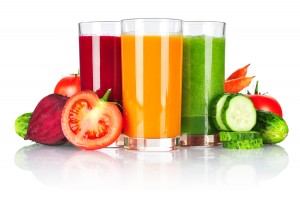 The Canadian Food Guide has been a go-to resource for year for individuals who are attempting to determine how their diet should be in order to optimize health. Recently, a friend of mine asked the question: Is the Canadian Food Guide accurate in its recommendations in your opinion? This question caused me to pursue and determine what my opinions were on the Canadian Food Guide, and if my recommendations to patients differed much. The answer I discovered is not so simple, and differs based on the role of the Canadian Food Guide, and my role in patient care.
The Canadian Food Guide has been a go-to resource for year for individuals who are attempting to determine how their diet should be in order to optimize health. Recently, a friend of mine asked the question: Is the Canadian Food Guide accurate in its recommendations in your opinion? This question caused me to pursue and determine what my opinions were on the Canadian Food Guide, and if my recommendations to patients differed much. The answer I discovered is not so simple, and differs based on the role of the Canadian Food Guide, and my role in patient care.
To begin with, it is worth noting that the Canadian Food Guide is meant to be a public health measure, geared towards optimizing the health of the public as a whole. That being said, certain individuals would benefit from a more individualist diet. As Naturopathic Doctors (NDs), we approach care from a individualist perspective, where you are a unique individual with unique health needs. As a result, dietary recommendations that I might make for one individual, I may not make for another. That being said, I can give a very general view of and perspective on the Canadian Food Guide, and where it flourishes, and where it may fall a bit short.
The serving suggestions per day provides an area both for cheer and for concern. The vegetables and fruits that are recommended per day are approximately 7-8 or 7-10 per day for adults (depending on gender). This serving suggestion is fantastic and is what I often recommend for patients to consume. However, I tend to ask patients to get more of their 7-8 per day from vegetables as opposed to fruit. In the area of grain suggestions, 6-8 per day are recommended for adults, which I find to be a bit much. I would also suggest the same of milk and milk products. Currently, the recommendation is for 2-3 servings per day of milk and milk products, which could be a bit much for most individuals. In regards to meat and meat alternatives, the recommended daily amount is 2-3 servings per day, which I am fine with as long as the focus is more on meat alternatives such as nuts and seeds. Specifically in the Canadian Food Guide, they are trying to focus more on the meat alternatives which is beneficial overall.
In addition to the serving recommendations, the Canadian Food Guide provides additional information including portion examples, how to read nutrition labels, increasing exercise, decreasing screen time, very general nutritional supplementation for pregnancy, and very general nutritional supplementation for pregnancy. An area of concern, however, arises if an individual is not paying close enough attention to some of the recommendations for obtaining their recommended servings per day. For example, in the food guide, it suggests that 100% fruit juice can count as a serving of fruit (which is correct), but if an individual does not pay enough attention, they could think that consuming juice in general is conducive to overall health (when in all actuality it may not be).
Bottom Line: Overall, the Canadian Food Guide does provide a very broad and general guideline for healthy eating for the Canadian population as a whole. Unfortunately, this may not be enough for most individuals in order for them to obtain optimal health. As a result, it would be beneficial for individuals who are hoping to improve their overall health to speak to a Naturopathic Doctor or health care provider about dietary recommendations that are best for their body and overall well – being.
Have you benefitted from reading this blog? Know someone that would benefit as well? Share, Like, Comment, or Tweet this article, and let me know what you think.
Some of the information provided above may not be appropriate for everyone, please consult with your doctor before trying any of the above. If you are interested in Naturopathic Medicine and wanting a different approach to your health care needs, please book an appointment with Elisha Cook at the RSNC (416-498-9763), and let me help you achieve your health goals.


